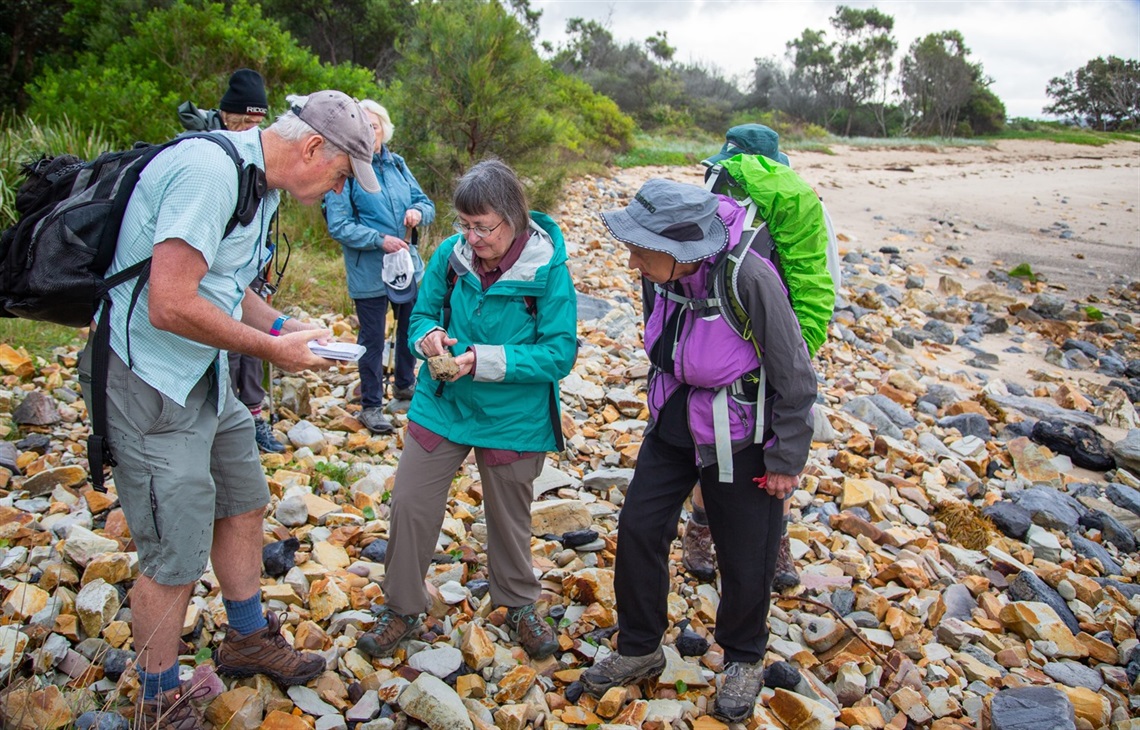Fossils a reminder of Lake Mac millions of years ago
Published on 27 May 2022

Natural phenomena millions of years in the making are emerging in Lake Mac as coastal erosion and recent heavy rain reveal amazing plant fossils hidden from sight since prehistoric times.
Fossilised trunks and branches from trees that towered above the landscape more than 250 million years ago are clearly visible protruding from cliffs near Caves Beach, as well as between Redhead and Dudley beaches and other parts of the city’s coast.
Lake Macquarie City Council Senior Environmental Strategy Officer Symon Walpole said Lake Mac had long held a reputation for being a fossil hot-spot in NSW.
Local areas of interest include the dozens of tree stump fossils clearly visible at low tide on the rock shelf at Swansea Heads, a petrified forest at Fennell Bay and the aptly named Fossil Wing Creek at Eleebana, where internationally significant insect fossils were discovered in 1898.
“It’s incredible to think these fossils pre-date the dinosaurs,” Mr Walpole said.
“Equally amazing is their condition after so many millions of years.”
Fossilised tree trunks and branches along the city’s coast have been preserved so well that in many examples, their knots, bark and growth rings are all clearly visible.
Retired Geologist Roslyn Kerr said the fossil logs emerging along the cliffs were probably eroded from banks of prehistoric rivers and lakes and washed into the water, eventually becoming saturated and sinking to the bottom to be buried by sediment.
Others, like the tree stump fossils at Swansea Heads, were victims of a massive explosive horizontal volcanic blast, which blew off their trunks.
Later falls of volcanic ash blanketed the fallen trees and stumps, burying and preserving them.
Back then, the coastline was much further east, and much of Lake Macquarie was a vast forest peat swamp, with rivers, floodplains and small lakes.
Countless leaf fossils are also preserved in what were once muddy floodplain and lake sediments, which is now shale that crumbles to the ground as the coast erodes.
“We are so fortunate to have these reminders of our ancient planet right in our backyard,” Mr Walpole said.
“They are one of Mother Nature’s wonderful tourist attractions, but it’s important they’re respected and preserved.”